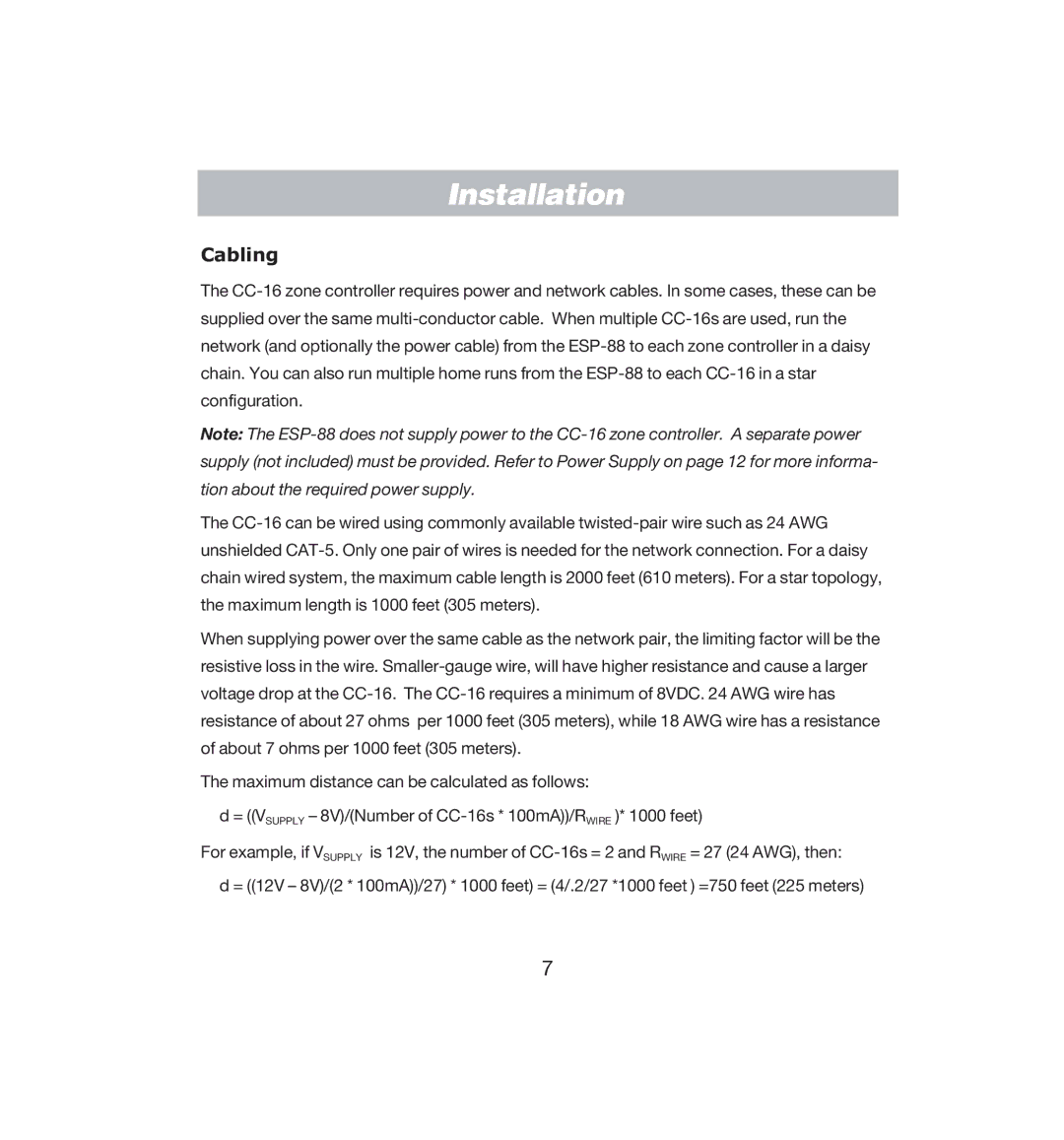Cabling
The CC-16 zone controller requires power and network cables. In some cases, these can be supplied over the same multi-conductor cable. When multiple CC-16s are used, run the network (and optionally the power cable) from the ESP-88 to each zone controller in a daisy chain. You can also run multiple home runs from the ESP-88 to each CC-16 in a star configuration.
Note: The ESP-88 does not supply power to the CC-16 zone controller. A separate power supply (not included) must be provided. Refer to Power Supply on page 12 for more informa- tion about the required power supply.
The CC-16 can be wired using commonly available twisted-pair wire such as 24 AWG unshielded CAT-5. Only one pair of wires is needed for the network connection. For a daisy chain wired system, the maximum cable length is 2000 feet (610 meters). For a star topology, the maximum length is 1000 feet (305 meters).
When supplying power over the same cable as the network pair, the limiting factor will be the resistive loss in the wire. Smaller-gauge wire, will have higher resistance and cause a larger voltage drop at the CC-16. The CC-16 requires a minimum of 8VDC. 24 AWG wire has resistance of about 27 ohms per 1000 feet (305 meters), while 18 AWG wire has a resistance of about 7 ohms per 1000 feet (305 meters).
The maximum distance can be calculated as follows:
d = ((VSUPPLY – 8V)/(Number of CC-16s * 100mA))/RWIRE )* 1000 feet)
For example, if VSUPPLY is 12V, the number of CC-16s = 2 and RWIRE = 27 (24 AWG), then:
d = ((12V – 8V)/(2 * 100mA))/27) * 1000 feet) = (4/.2/27 *1000 feet ) =750 feet (225 meters)
